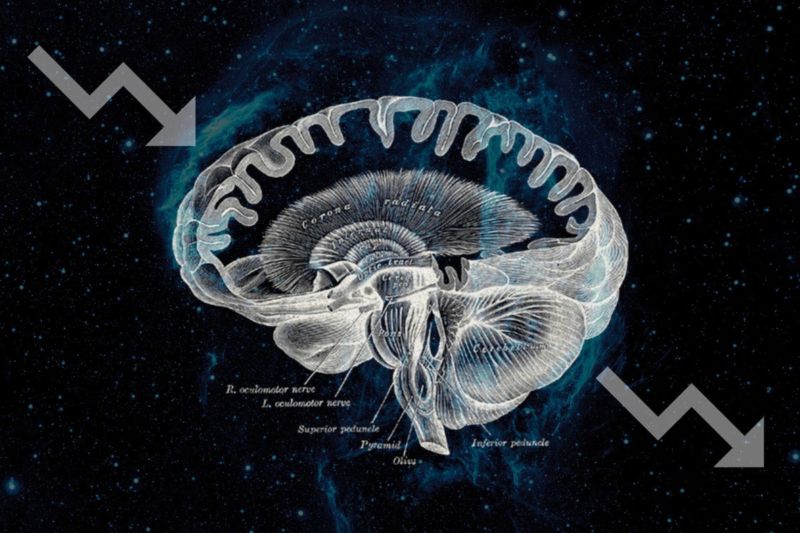 Twenty years ago, the neuroscientist John E. Dowling wrote a book about the brain called Creating Mind. Since then, our understanding of cellular neurobiology and even systems neuroscience has exploded. So Dowling decided to update his book. Yet our understanding of the mind has not exploded apace with our understanding of the brain—scientists and philosophers can’t even agree on a definition of what “mind” is. This updated book, called Understanding the Brain: From Cells to Behavior to Cognition, is not going to settle that debate.
Twenty years ago, the neuroscientist John E. Dowling wrote a book about the brain called Creating Mind. Since then, our understanding of cellular neurobiology and even systems neuroscience has exploded. So Dowling decided to update his book. Yet our understanding of the mind has not exploded apace with our understanding of the brain—scientists and philosophers can’t even agree on a definition of what “mind” is. This updated book, called Understanding the Brain: From Cells to Behavior to Cognition, is not going to settle that debate.
Most chapters of this new version begin with an anecdote describing some poor soul who is suffering from a neurological disorder the chapter explains: Bob lost his memory as he aged; Tess had depression; Helen Keller was Helen Keller; etc. It worked for Oliver Sacks, and it works here. Professor Dowling starts off with the basics by outlining the structure and organization of the brain, the cells that compose it, and how chemical and electrical signals are transmitted through those cells. He uses the visual system, which he spent his career studying, as a synecdoche to represent how sensory data from the outside world gets perceived and processed.
This background information is the bulk of the book; we don’t get to higher brain functions like language, rationality, and emotions until the last third. The pinnacle—consciousness—is not broached until the last (and shortest) chapter.
Don’t know much about...
Throughout, Understanding the Brain reads like a compendium of things we still don’t know. We don’t know how many neurons are in the human brain. We don’t know why neurons are shaped the way they are. We don’t know how alcohol relieves anxiety, or how dopamine signaling is impaired in schizophrenia, or what most neuropeptides do. We don’t know the function of enkephalins (endogenous opioids) in normal brain activity, although their discovery did somewhat explain why our brains have receptors for opiates at all. Maybe, Dowling suggests, they mediate the placebo effect?
We don’t know why vertebrate photoreceptors work the way they do, causing neurons to become hyperpolarized when exposed to a light stimulus rather than depolarized the way most other receptors—including invertebrate photoreceptors—behave upon stimulation. We don’t know why each hemisphere of our brains controls the opposite side of our bodies, and we don’t know the normal function of the protein that, when mutated, causes Huntington’s disease.
We don’t know exactly what is involved in face recognition, even though six discrete brain areas have been implicated in it. We don’t know how the images that our retinas detect are recreated in the cortex or why the brain areas controlling speech are the only ones we know of to reside solely in one brain hemisphere (usually the left—the corresponding space on the other side seems to control music). We don’t know which brain regions could hold some attributes of mind, like understanding and creativity. We don’t know why we sleep, or how we fall asleep, or why we dream. Or if animals dream.
And obviously we don’t know what consciousness is.
A consensus does seem to be emerging that consciousness is a natural consequence of neural processing, and Professor Dowling subscribes to this view. There is nothing unique about the human brain, he writes. “The human brain is qualitatively similar to the brains of other animals but quantitatively different... the cerebral cortex of the human brain, the seat of higher neural function—perception, memory, language, and intelligence—is far more developed than is the vertebral cortex of any other vertebrate. And because of the added neural cells and cortical development in humans, new facets of brain function emerge.”
Consciousness is just a “logical extension” of these phenomena. Once we understand the neural mechanisms underlying them, our brains might be able to understand our minds.





